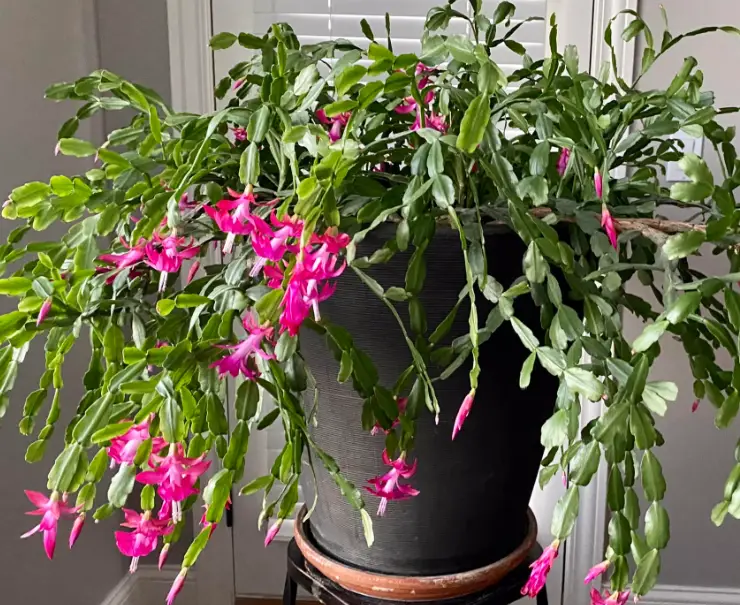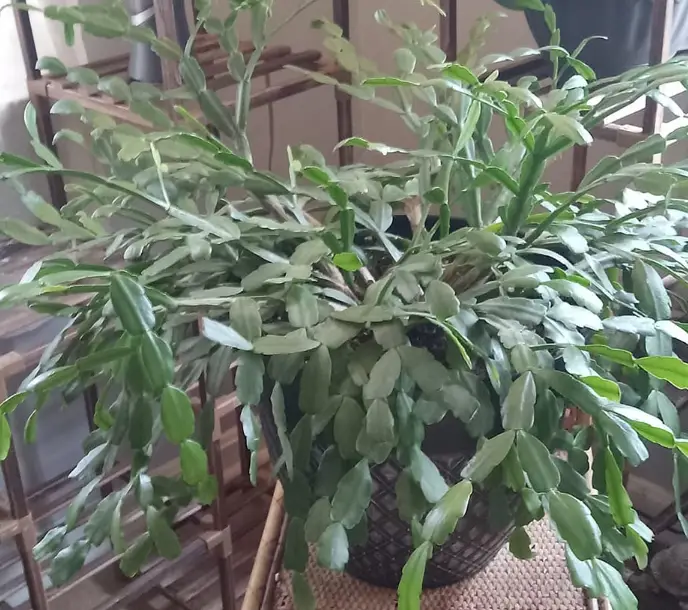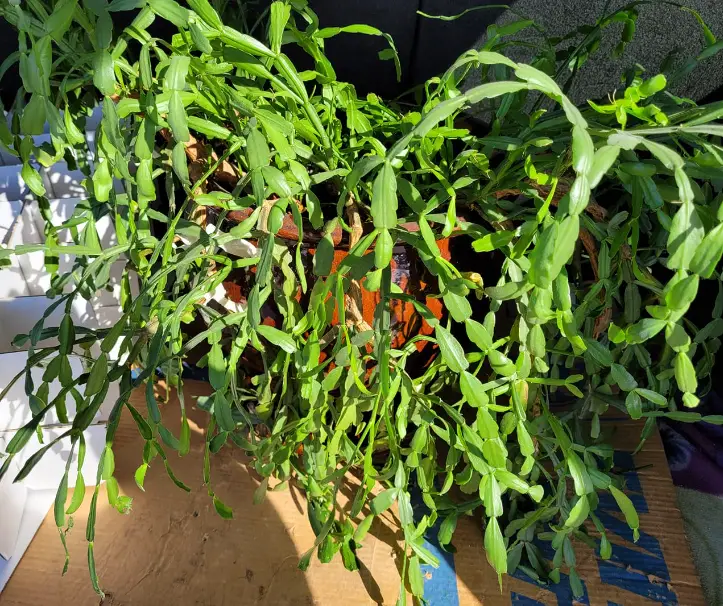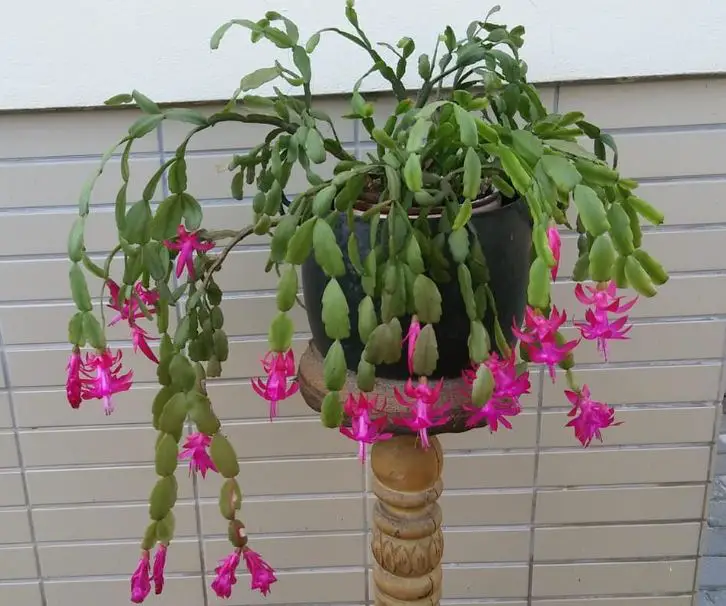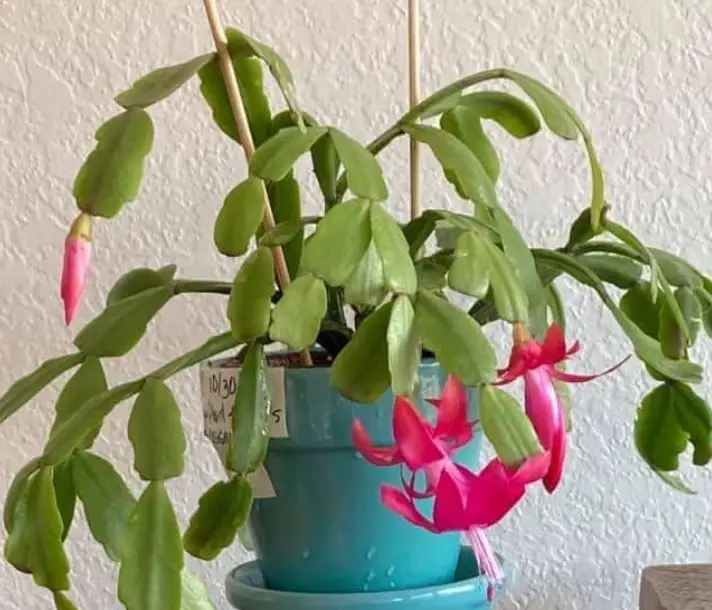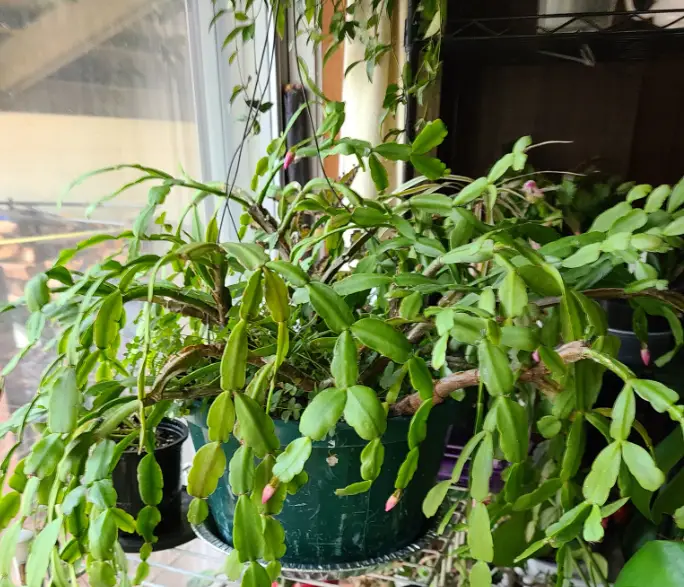Why is My Christmas Cactus Dying? What to Do Next
A Christmas cactus is a beautiful holiday plant that always adds color and warmth to a home during Christmas and sometimes around Easter. However, like any plant, it can experience problems and diseases that may cause it to die.
A well-cared-for Christmas cactus should live more than 30 years. However, the plant may die prematurely from overwatering, underwatering, poor soil drainage, lack of enough light, extreme temperatures, pests, and diseases.
Sometimes it’s difficult to tell if a cactus is in distress, especially if you are a starter. Usually, the plant will show signs such as yellowing or wilting leaves, soft or mushy stems, leaves falling off, or unusual spots on the plant.
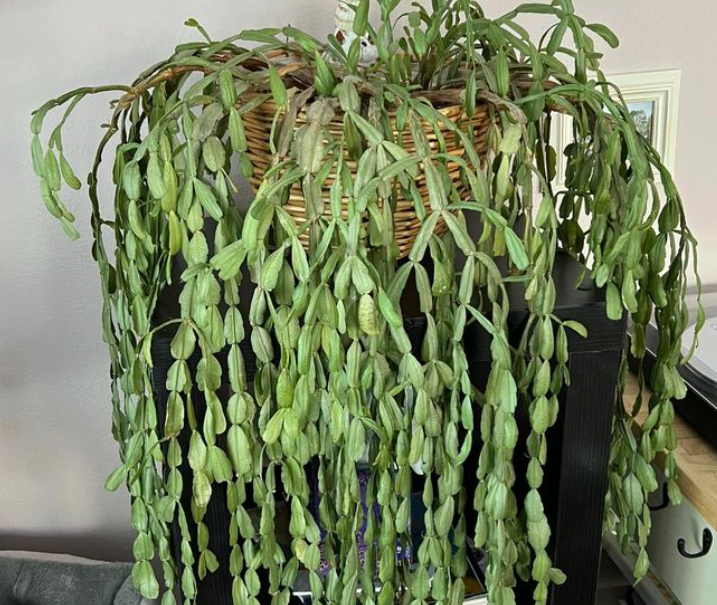
Why is my Christmas cactus is dying
You can easily save a dying cactus if you make a quick intervention. First, you must know exactly what’s causing the problem. Unfortunately, there are many reasons why a cactus may die, including the following:
1. Overwatering
Watering is very important to any house plant but becomes problematic when you overdo it. Christmas cactus is naturally a succulent that can store water for quite a long period. For this reason, this plant does not endure excess moisture or water around its roots.
Christmas cactus can be susception to root rot when overwatered. Waterlogged soil prevents oxygen from reaching the roots. This creates a favorable environment for the growth of fungus and bacteria that can cause root rot.
Root rot can be difficult to detect at first as it silently happens under the soil. The affected plant will eventually show symptoms such as yellowing, wilting, or dropping of leaves or stems, soft and mushy roots, and a foul smell from the soil.
If left untreated, root rot can quickly spread to the rest of the plant and eventually cause it to die.
What to do
Fungicides aren’t effective at treating root rot or stem rot. If you suspect root rot, the best thing to do is to remove the plant from its pot as soon as possible and wash the roots. Cut off all the chunks of the squashy rotten parts and repot the plant.
Be sure to use well-draining soil (a combination of potting soil amended with river sand) and a pot with good drainage holes. Henceforth, water the cactus only when the top of the soil is dry, and don’t allow the plant to sit in any standing water.
2. Underwatering
Unlike a desert cactus which can go longer without water, a Christmas cactus is native to tropical rainforests where there is frequent rain and plenty of humidity. You’ll see the cactus turning brown and dying when not watered enough.
Additionally, underwatering makes the soil get too dry, damaging the roots and preventing them from absorbing water and nutrients. As a result, the plant may become weak and more susceptible to pests and diseases.
How to Fix
If you left your plant on the window seal without watering and it has started to wilt, then start watering it immediately. Water until the soil is moist but not waterlogged. Excess water in the soil can easily drown the already weakened roots.
If the potting soil won’t absorb water, it’s likely to be very dry and compacted. You should loosen it before watering by poking holes with a thin piece of wood or metal. This should make it possible for the roots to access the water.
Generally, It’s best to establish a consistent watering schedule based on your plant’s needs. A healthy cactus in a cool, humid indoor environment should be watered every one to two weeks. But be sure that the top 1 inch of soil is dry.
You’ll also need to provide some additional source of humidity to your cactus if you live in dry conditions. Simply put a tray of water next to the plant to supply humidity as water evaporates. Alternatively, mist your plant 2 to 3 times a week.
Be sure to keep the plant away from drafts, heat vents, fireplaces, or any other sources of hot air.
3. Inappropriate lighting
Like any other plant, a Christmas cactus needs light to produce its food through the process of photosynthesis. Christmas cactus prefers bright, indirect light. Direct sunlight can scorch the leaves of the plant and cause stunt growth.
Insufficient light, however, causes the plant to stall in growth or die slowly. The plant may also grow spindly and paler.
Solution
If your cactus hasn’t received enough light, move the plant to a spot with bright indirect light (like near a window) to stimulate recovery and growth. If your cactus is in a north or east-facing window, you won’t have to worry about the intensity of the light.
But if it’s in a south or west-facing window, you’ll need to diffuse the light with translucent curtains. As mentioned, intense sunlight may also stress the cactus.
4. Small pot size
The size of the pot is very important to the health of your Christmas cactus. This plant will grow rapidly and fast in the right conditions, spreading its roots. As this happens, the pot may start getting smaller.
When all the space in the pot is used up, the crowded roots will now have difficulty tapping water, air, and nutrients. In this case, the plant will stop growing, the leaves will start wilting, and eventually, the plant may die.
How to Fix
When you see the plant roots popping out the bottom of the drainage holes, it’s a sign that there is no more space left in the pot for proper growth of the roots. You should inspect the plant for severe root bound and repot it in a slightly bigger pot.
5. Lack of nutrients
Every plant needs nutrients to survive, which also applies to your indoor holiday cactus. It’s very normal for a potted plant to use all the nutrients in the soil, but very wrong when the supply cannot be replenished.
If you haven’t fertilized your cactus more than 2 years since planting it, then there are chances that it’s struggling to survive and may eventually wilt and die.
Best fix
Apply a well-balanced houseplant fertilizer to revive your plant. Ensure to follow the label directions for how much to feed. Alternatively, repot the plant in a fresh soil mix.
6. Pests and diseases
Pests and diseases can be the reason for your plant’s demise. Botrytis blight (gray mold) and root or stem rot are popular fungal infections that have killed many houseplants.
Similarly, pests such as aphids, spider mites, and mealybugs feed on a plant’s sap or soft parts, resulting in poor growth and death.
How to treat
Always inspect your plant as you keenly look at every part, including the underside of the leaves and roots. Check the soil, where some pests, like fungus gnats, lay eggs. Remove the affected parts and treat your plant immediately with a recommended pesticide or a fungicide.
7. Extreme temperatures
While the Christmas cactus is known for its resilience and ability to tolerate a wide range of temperatures, exposure to extremely low temperatures, below freezing, can damage its leaves and stems, causing it to die.
On the other hand, extremely high temperatures above 90°F (32°C) can cause dehydration and sunburn that may harm or kill the plant.
What to do
If you suspect your Christmas cactus has been exposed to extreme temperatures, move it to a place with consistently moderate temperatures. Keep it away from cold drafts and direct sunlight.
Final Thought
While the Christmas cactus is a resilient and easy-to-care-for houseplant, several reasons may cause the plant to die, including overwatering, underwatering, poor soil drainage, lack of enough light, extreme temperatures, pests, and diseases.
If you notice any signs of distress, such as yellowing or wilting leaves, brown or black spots, soft or mushy stems, and dropping of leaves or flower buds, immediately take appropriate action to help the plant recover.
References:
- North Carolina State University, Christmas Cactus Care
- New Mexico State University, Shriveling Christmas cactus
My name is Diane M Lewik, and I am the founder of this website. I am a degree holder in plant biology from the University of California – Berkeley. Over the years, I have cultivated a vast collection of succulents and I have learned a great deal about how to grow and care for these unique plants. Feel free to ask any questions in the comment section below.
